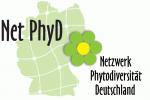Keynotes
Nutrient Network – synthesis through modularized experiments and data analysis
Helmut Hillebrand, Institute for Chemistry and Biology of the Marine Environment, University of Oldenburg, Germany
Ecological research often produces context-dependent results, which are not easily generalized across all ecosystems of a similar type. This has lead to the development of meta-analyses as a stastical tool to quantitatively synthesize information from different studies and to detext general tendencies across multiple field sites. The success of meta-analysis is constrained by the fact that generalization is difficult if methods used to manipulate variables of interest, measure relevant response variables and analyze data strongly diverge between the different studies. Therefore, the Nutrient Network (www.nutnet.org) has been funded to perform the same manipulations and measurements at >50 field sites wordwide, covering the full range of grassland-type ecosystems on Earth. This Network science couples the advantages of a standardized, well documented approach with the possibility to draw general (global) inferences based on the multitude of observations. This allows using the network to analyze long-standing ecological questions such as i) does diversity show a predictable pattern with system productivity?, ii) are diverse systems more stable, iii) do invasive species behave differently in native and exotic ranges.
Contemporary range shifts and late-Quaternary niche stasis of terrestrial plants – inference from vegetation databases
Jonathan Lenoir, Université de Picardie Jules Verne, Amiens, France
As increased temperature associated with climate change exceeds species’ thermal tolerances, species need to track (distribution shifts) or adapt (niche shifts) to changing environmental conditions to avoid extinction. Starting from the geographical space, I will first present published work based on several national vegetation databases from France and documenting observed changes in the geographical distribution of forest plants during contemporary climate change (from 20th century onwards). Despite significant changes in forest plant species distribution, the magnitude of these observed range shifts do not match the magnitude of expected range shifts given climate change alone suggesting time lags in the biotic responses of forest plants to contemporary climate change. Switching to the ecological space, I will then present ongoing work based on two European vegetation databases to tackle a very old and important debate in ecology that is still unresolved, namely the debate on whether or not the realized climatic niche of terrestrial vascular plants is conserved in space and time (thousands of years). Focusing on a large set of distant populations of the same native plant species that established in both the European Alps and Fennoscandia during the late-Quaternary period, preliminary results suggest strong conservatism of the realized climatic niche. Such empirical evidence of recent range shifts lagging behind contemporary climate change and long-term (thousands of years) stasis of the realized climatic niche of terrestrial plants have important implications for species distribution models forecasting future range shifts.
Modeling long-term forest dynamics: Interfacing succession models with empirical data leads to surprises
Harald Bugmann, Forest Ecology, Institute of Terrestrial Ecosystems, Department of Environmental Systems Science, ETH Zurich, Switzerland
Forest succession models have originally been developed to provide a broad understanding of the relationship between ecological processes and time-dependent patterns of biomass, diversity, and ecosystem structure in unmanaged forests. As such, they have been quite successful. Over time, this class of models has increasingly been used to study applied phenomena such as the impacts of climate change on forests. In this context, however, statements about the few unmanaged forests that are left in Europe are of little significance, and the models thus were also used to study managed forests.
Over the last decade, we have seen an ever higher local accuracy of these models, particularly by interfacing the models with empirical data from forest reserves and growth-and-yield plots. As a result, our confidence in their ‚predictions‘ of ecological dynamics for the coming decades at the stand scale has increased a lot.
In my presentation, I will discuss the rationale underlying these models, I will review early applications as well as more recent studies that were geared towards higher local accuracy, and I will demonstrate the paradox that we have encountered in recent studies: succession models parameterized for short-term applications cannot be used to study long-term ecological dynamics (and vice versa), and models parameterized for simulating species distributions are not suitable for simulating local dynamics (and vice versa). I will try to explore reasons for this paradox, which may lie with the empirical data, the methodology underlying the parameterization, or the model structure itself.



